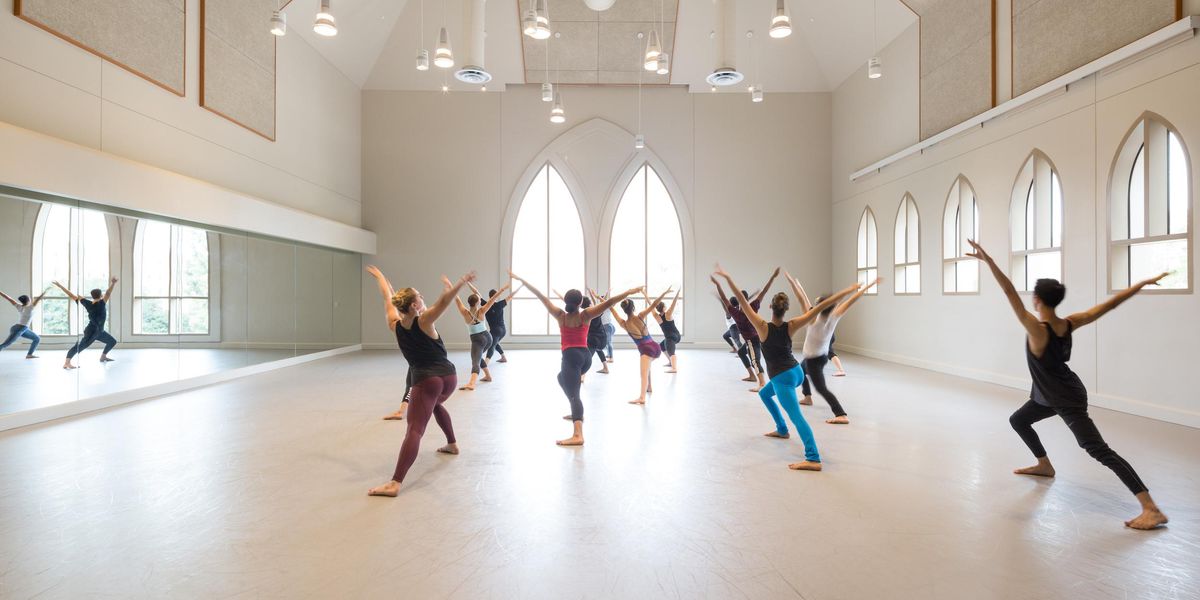Feeling Over Fireworks: Royal New Zealand Ballet
I was lucky to see two performances of Royal New Zealand Ballet, now with Ethan Stiefel at the helm. On its first U.S. tour in 21 years, the small but vital company toured to four cities including Santa Barbara, where I happened to be teaching last week, and New York.
In a way, what was most surprising, given Ethan Stiefel’s star status, was how modest both programs were. The Giselle in California was scaled back (14 Wilis instead of the standard 28) and the choreography simplified. The triple bill of contemporary pieces in NYC had casts no larger than ten. But within those limits, both programs were refreshing, and the dancers were committed to every move. Clearly Stiefel is devoted to nurturing fine, sensitive dancing rather than technical—or choreographic—fireworks. So often companies coming to the Joyce from out of town are trying to prove something, but RNZB seems to be something.
Qi Huan and Gillian Murphy
Photo by Evan Li
The Giselle at the Granada Theatre in Santa Barbara was cozy and well danced, with the lead couple being Gillian Murphy, on loan from ABT, and Qi Huan. Both Stiefel and Johan Kobborg contributed to the choreography. Their version is not a radical departure but had some nice touches—the peasant pas de deux was performed by a bridal couple. (Does anyone know if this is a Bournonville tradition?) But the big change was that the whole story was told as a flashback from an aging Albrecht, expressing regret. At the end of his life, he returns to Giselle’s grave, allowing the Wilis to track him down. As Myrta points a steely arm at him, he opens up to her.
Later in the talkback, Stiefel said that he and Kobborg came up with that ending together. Albrecht is basically saying, “I’ve always loved Giselle; take me now so that I can be with her in death.” This was a chilling thrilling ending—and so different from the usual ambiguous ending when Albrecht looks up and wonders what it was all about.
Gillian Murphy played Giselle with a tinge of melancholy in the first act that almost foretold her doom. She was matched in intensity by Qi Huan as Albrecht. His 24 entrechat quatres when he’s pleading for his life were magnificent: He sprang higher than one would think humanly possible, depleting him of every shred of strength, so he staggered to the floor and Murphy really did have to bring him back to life.
Other dancers of note: Lucy Green sparkled as the bride in the peasant pas, and Jacob Clown was an appealing Hilarion.
The Santa Barbara audience, including 70 students from UC Santa Barbara, gave the company a standing ovation.
RNZB dancers in Andrew Simmons’ Of Days
Photo Credit Evan Li
During RNZB’s appearance at the Joyce, the one ballet that haunted me was Of Days by RNZB alum Andrew Simmons, a choreographer new to me. There was something velvet and mysterious about this piece, though very low key. Every decision of when a dancer crossed the space, how one touched another on the shoulder, or what part of a duet remained in the dark, felt just right to me. I was hypnotized by how the dance and music (by three minimalist composers) knitted together. This ballet was too subtle to be a crowd pleaser, but I was so moved by it that I could hardly watch anything afterward. I’d love to see it again so I could articulate better the feeling that washed over me.
Clytie Campbell in Banderillero
Photo by Bill Cooper
Javier De Frutos’s Banderillero was more rousing but for me, less affecting. Some solos and duos launched into wild dancing while groups stood on the sidelines as spectators of this quasi bull fight. Unfortunately I didn’t know that Banderillero means Toreador, so the whole metaphor of the bullring was lost on me. (Sure I wish I knew Spanish, but for those of us who don’t, a translation in the program notes would not have been a waste of space).
Qi Huan and Gillian Murphy in
28 Variations on a Theme
Photo by Evan Li
More successful was Benjamin Millepied’s 28 Variations on a Theme by Paganini, a courtship dance for five couples. He created it for the School of American Ballet in 2005, but when it came to the Joyce in 2008, it was paired with another five-couple ballet so it lost its distinctiveness. But this is a lovely romantic piece—long tutus and a chandelier—embedded with delightful choreographic surprises. It looks a bit like Elliot Feld’s beguiling Intermezzo but has some of the luxuriousness of Robbins’s In the Night.
The RNZB dancers were a pleasure to watch in both programs, and it was fun to recognize some of them as distinct individuals the second time around.
All photos Courtesy Royal New Zealand Ballet.




